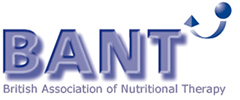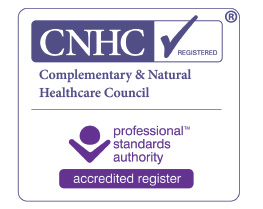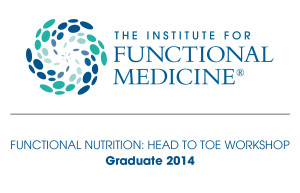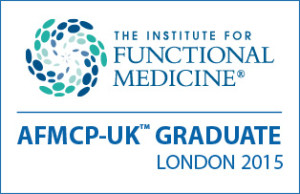Have you reached a plateau in your weight loss despite your exercise programme? Are you even gaining fat and losing muscle? Are you feeling frequently tired, depressed or ill and do you need exercise to pick you up again? Are you sleeping less than you used to? Are you struggling with fertility issues? Is your libido less than it once was?
If you answered yes to any of these questions your exercise programme may be harming you both in the short term and in the long term as I explain in this post.
I also outline the health benefits of exercise and give some guidelines as to how much and what kind of exercise can most benefit your health and is most likely to increase your lifespan.
Many of us exercise for weight loss as well as for general health. One of the ways in which exercise benefits us is by causing oxidative stress which causes the body to increase antioxidant production (1, 2, 3). You can think of this as an example of hormesis, which means that a small amount of poison can strengthen the body, much like polyphenols such as curcumin from turmeric or EGCG (epigallocatechin gallate) from green tea are actually toxins designed to protect the plants they come from. As humans we are lucky enough to have developed detoxification pathways for these toxins and in small amounts they can actually increase our antioxidant production and detoxification pathways and thus benefit us precisely because they are a poison. The dose makes the poison and so the oxidative stress generated by moderate exercise will increase antioxidant production but excessive exercise will deplete your antioxidant reserves (4). Taking antioxidants during, before or after exercise may actually reduce some of the benefits of exercise by slowing down the production of your own antioxidants (5), although the research is mixed and some benefits are seen, for example, from supplementing curcumin (6).
We know from countless studies that moderate exercise can benefit health in many ways. It can improve muscle mechanics, strength and endurance and thus reduce risk of injury, especially in the elderly (7). Exercise can not only improve bone mineral density and reduce the risk of osteoporosis but it can also improve balance and co-ordination thus reducing the risk of falls and fractures (8). Exercise can increase muscle mass which increases your basal metabolic rate so you burn more calories even when you are at rest. Exercise is the best way to increase growth hormone which is associated with reduced body fat and increased lean body mass (9), which is mostly muscle mass and therefore burns more calories even at rest. Exercise helps to balance blood sugar and reduce insulin resistance (10) and thus reduces the risk of Type 2 Diabetes and obesity (11). Exercise can increase the number of your mitochondria (12). These are the organelles in your cells that generate ATP (adenosine triphosphate) which your body uses to store energy that can then be used for the processes of life in your body. Thus increasing mitochondria is believed to have an anti-aging effect (13, 14, 15). Exercise can benefit heart health (16) and reduce your risk of Alzheimer’s disease (17).
High-intensity exercise is more effective in increasing growth hormone (18) and is more beneficial for blood sugar control and heart health (19) as well as increasing your mitochondria (20) and may even halt the progression of Parkinson’s disease (21). It is also helpful for weight loss (22) although it may be harder for the overweight to persist with high intensity training programme (23).
Light exercise like yoga (24, 25, 26) and Tai Chi (27, 28) can reduce the level of your stress hormone cortisol but moderate and more vigorous exercise increase cortisol (29) . This can make you feel good in the short term when you exercise as you may feel more alive. An increase in neurotransmitters such as dopamine, noradrenaline and serotonin and perhaps also endorphins can also add to the feel-good factor of exercise which is why it can be so helpful for depression (30, 31). However when the cortisol and dopamine come back down you may feel tired and depressed as your body cannot produce enough antioxidants to counter the damage from the stress you have put yourself through and your neurotransmitters may now be depleted (32). Your cells may become resistant to the previously high levels of cortisol causing further fatigue until you get your next cortisol hit from exercise or some other stressor to make you feel more alive again. The high levels of cortisol can cause you to gain weight, especially the more dangerous weight around the middle and around your organs known as visceral adipose tissue (33) . Visceral adipose tissue releases inflammatory mediators, hormones and other bioactive chemicals and is associated with metabolic syndrome, heart disease and some cancers (34). High cortisol levels will not only cause you to lose muscle mass but can even reduce bone mass because the protein in the bone is broken down for energy to meet the demands of stress (35).
Cortisol is made from pregnenolone, but so are your sex hormones. The demands you are placing on cortisol production with excessive exercise could therefore deplete sex hormones. This may be why excessive endurance training can reduce testosterone and male fertility (36) and libido (37) as well as cause female infertility (38). Especially concerning is the ‘female athlete triad’ of missed periods, osteoporosis and disordered eating, that is seen in young women athletes who are not matching their caloric intake to their exercise programs (39).
High levels of cortisol from excessive exercise can also impact thyroid function (40) and this can also prevent successful pregnancy (41) as well as slowing your metabolism and thus causing weight gain and fatigue (42) as well as poor immune function (43). Thyroid function can be further reduced (44) and cortisol response to exercise increased (45) by a very low carbohydrate diet. A low carbohydrate and even ketogenic diet can be very beneficial for weight loss and for the health of your mitochondria provided you can ease yourself into it without upsetting your thyroid and cortisol levels, but it is likely that if there are already underlying hormonal imbalances they will be magnified by the ketogenic diet especially with excessive exercise.
Moderate exercise will increase gut flora diversity which improves blood sugar balance and immune function but prolonged exercise will cause intestinal hyperpermeabilty, aka ‘leaky gut’, and translocation of bacteria from your gut into your bloodstream, thus driving inflammation (46).
Excessive endurance exercise may even be a cause of heart disease (47, 48, 49).
So how much should you exercise? Well that depends on your stress levels, levels of inflammation, oxidative stress and toxicity, whether you have any infections, how much you manage to sleep, what your diet is like in general and how much exercise you are used to. The key question here is “How long does it take you to recover from exercise?”. If exercise exhausts you for too long it is probably doing more harm than good. If you feel tired or depressed the next day and need to exercise to pick yourself up again you are pushing yourself too hard to get a cortisol and neurotransmitter high. If you start gaining fat or losing muscle, sleep less than you used to or you feel frequently ill and tired you may be overdoing it.
Whereas lab testing can reveal cortisol and thyroid imbalances, Heart Rate Variability (HRV) is a great tool you can easily use at home to assess on a daily basis if you are overdoing it or if you are ready for more exercise. For more information on HRV see my post From Chronic Fatigue to High Intensity Training – When to Rest and When to Be Active.
General recommendations for exercise for most people are to aim for 150 minutes of moderate aerobic activity a week or 75 minutes per week of vigorous aerobic activity (50) and this can be spread over five sessions of 30 minutes but seems to be equally beneficial if spread over fewer sessions (51). Following these recommendations reduces mortality risk by 31% but the peak benefit is reached at 3-5 times this level of exercise with a 39% reduced mortality risk, which is perhaps a small rise for the extra number of hours you would be putting into exercising and there is another way you can increase the benefits of exercise without spending more time exercising, which I will come to shortly.
Remember, however, that these figures come from studies which look at averages across a population and if you as an individual are out of balance even the 150 minutes of moderate aerobic activity may in fact be too much for you.
Even a lower dose of exercise can reduce mortality by 22% in the elderly (52) who may want to begin with just 15 minutes of moderate to vigorous exercise five times a week. Just 30 minutes a day of very light activity such as slow walking, gardening or doing household chores can decrease mortality by 12% (53).
Resistance or weight training is also recommended twice a week to strengthen all major muscle groups.
Adding in some high intensity training can provide further benefits in reducing heart disease risk, weight loss and prolonging life (54). High intensity training can increase growth hormone (55) to balance the effects of the increased cortisol from the exercise. Cortisol breaks down tissue although it increases fat storage, and growth hormone does the exact opposite, building up muscle and breaking down fat (56, 57). You could benefit from 1-3 short sessions per week of high intensity training of 20-30 minutes duration but I do not recommend any more than this. This could be high intensity weight training to also increase muscle mass and strength Or perhaps even better you could incorporate the high intensity as short bursts within your medium intensity workout in some form of interval training which has also been shown to be particularly beneficial. By doing some high intensity training you can increase the health benefits of your exercise program without increasing your total exercise time, which then also leaves more time for rest and leisurely activities to bring cortisol back down to healthy levels.
At the other end of the spectrum simply getting up and moving around every 20 minutes rather than sitting for long periods can reduce your risk of heart disease (58) and overall mortality (59, 60). Sitting for long periods can actually negate the benefits of your exercise sessions on heart health and mortality (61, 62) unless you engage in around 60-75 minutes of moderate intensity exercise per day (63). If your work is sedentary you could also get a standing desk and alternate sitting and standing every 20 minutes or even get yourself a treadmill desk.
And it is vital to balance the exercise with rest, quality sleep and leisure activities that bring your cortisol levels back down, such as yoga, Tai Chi, meditation (64 , 65 , 66), gardening (67), listening to some relaxing music (68 , 69 , 70), hugging (71, 72), having a massage (73), laughing (74) and singing (75).
What benefits do you notice from exercise? Have you experienced symptoms of over exercise? Let me know in the comments below.
SIGN UP TO THE NEWSLETTER TO BE INFORMED WHEN EACH NEW POST IS RELEASED.
Learn more about my work in London and Totnes, or find out about online consultations.






Leave a Reply